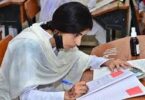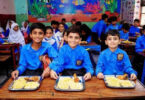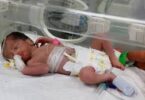Khwaja Wajid-u-Din
According to the last census issued by the government of Pakistan, children below 15 represented 40.7% of our population in 2017. According to the same census, 10. 37% comprised children between 15 to 19. Those figures indicate that children stand for roughly more than 50% of our total population.
“The United Nations Universal Declaration of Human Rights, has proclaimed that childhood is entitled to special care and assistance. The need to extend particular care to the child has been stated in the Geneva Declaration of the Rights of the Child of 1924 and in the Declaration of the Rights of the Child adopted by the General Assembly on 20 November 1959 and recognized in the Universal Declaration of Human Rights, in the International Covenant on Civil and Political Rights (in particular in articles 23 and 24), in the International Covenant on Economic, Social and Cultural Rights (in particular in article 10).” The nelson Mandela rules provide additional guidelines on justice with children.
Pakistan has signed and ratified the United Nations Convention on the Rights of Child and is hence bound to take measures accordingly. Those International commitments, legalities, ground realities and research led us to the conclusion that the answer was in the constitution, and decision of the NJPMC (National Judicial Policy Making Committee) dated 24/6/2019 and law of the land. Detailed deliberations and analysis by our team concluded that merging the rights of the child to protection broadly with the child welfare mandate severely diluted the former. The Child Protection Unit (CPU) assessment report of 2013 reveals that 95% of the cases received were welfare oriented and 5% were protection related.
The assessment led to the finding that a conceptual distinction between child protection and child welfare is required to ensure a better enforcement of children’s right to protection and dignity in the country. The most unfortunate and tragic incidents reported were cases of child pornography, child trafficking and inciting child to bet or borrow which required immediate attention and called for the establishment of Children Protection Courts.
In the devolved context, each Provincial Government in Pakistan is obliged to ensure that children are protected from all forms of abuse, violence, exploitation and neglect. In pursuance of this obligation, the province of Khyber Pakhtunkhwa promulgated the “Child Protection & Welfare Act 2010″. The statute provides for the articulation of specific criteria in support of the identification of children requiring protection in the province and the establishment of an administrative structure to ensure the delivery of the child protection mandate. The Act also provides the establishment of Children Protection Court.
In fact, the legal mandate of the Child Courts envisaged in KP is a comprehensive one as it concerns children in conflict (accused) and in contact with the law with the law (victims): under one roof, child courts consequently hold several special jurisdictions as a child protection court, a juvenile court and an anti-rape court.
The establishment of child courts relies on the theory that children are characterized by specificities and vulnerabilities that make them different from adults. To ensure that they access justice, it is essential to provide minors with a justice process that abides by the internationally recognized principles to avoid secondary trauma and victimization.
The basic concept of child courts was as follows:
- To provide an exclusive forum for the children in conflict with law or seeking the help of law to enforce their rights, and disposal of children cases on priority;
- Provision of safe and secured atmosphere to provide confidence to the children,
- Frequent and repeated follow up by the Child Court to explore possibilities of reformation and reintegration of children in conflict with the law into the society as a healthy, responsible and law-abiding citizen.
- Ensure the beautification of court rooms with paintings on the walls, colors inside and outside the court rooms which could provide a conducive atmosphere to the children in attendance;
- Segregation of children from adult accused to keep them away from all sorts of harm.
- A team of specialized, trained and mentored judges, prosecutors and police officers in and around the child courts to dispense justice with children.
- A unique aspect of this child court concept has been the applied child participatory approach to guarantee the relevance and efficiency of the courts: they were involved in the training of judges, in the selection of the court premises, in their design and launch. This was a very peculiar experience from which we learned a lot. Children understand child rights and can provide valuable suggestions to enforce those.
- Above all to ensure that the conditionality’s of international commitments, constitution of our country and the law were fulfilled.
In this connection Administration Committee of Peshawar High Court in its meeting held on 26-01-2019 approved the establishment of Child Protection Courts as a Pilot Project in Peshawar instantly followed by the establishment of Child Courts in the Divisional Head Quarters and ultimately in all the districts of Khyber Pakhtunkhwa. In order to achieve the desired results, training sessions were arranged by the KP Judicial Academy and Group Development Pakistan. The trainees were not only judicial officers but also all the key stakeholders involved in the justice sector.
In the first phase, a Child Court was established in the Provincial Capital (Peshawar). The basic facilities and paraphernalia were provided by the British High Commission and Group Development Pakistan. A French philanthropist, Gilles Blanchard, of “Zamzana” company contributed to the establishment of a child court in Mohmand, the erstwhile FATAs agency. It was a historic achievement indeed to foster formal gender and child justice. A dedicated judge was assigned to the court. The exclusive working days for the Child Court were determined on the basis of data received from District Courts. In the second Phase, the establishment of the Child Court was extended to the Divisional Head Quarters on the pattern of the CC Peshawar. These were inaugurated by late Chief Justice, Honorable Mr. Justice Waqar Ahmed Seth and the present incumbent Honorable Mr. Justice Qaiser Rashid khan Chief Justice of the Peshawar High court. By the grace of the Almighty, Khyber Pakhtunkwa is the province with the highest number of child courts- eight to date-.
The child courts created a ray of hope in opening new horizons for effective delivery of juvenile justice and child protection. Regular third-party assessment of all child courts in Pakistan showed that child courts are working quite efficiently. The last assessment available shows that the case disposal rate of child courts in Khyber Paktunkhwa was 90 % in Bannu, 84% in Mohmand,79% in Peshawar,68% in Abbotabad, 68 % in Mardan, 65% in Derra Ismail Khan, 59% and 50 % in Swat and Kohat respectively. The child court in Karachi Malir was at 33% Karachi east was 80 % while Lahore was 29 % and Quetta at 14 %; 65% was the rate at the national level. The national average time to dispose of a case by the child courts was of 184 days.
“On average, cases remained active for 120 days in the pilot child courts, at the National level. In Peshawar pilot child court, cases remained active for 149 days on average. In Mardan pilot child court, so far, cases have remained active for 94 days on average. In Abbottabad pilot child court, cases are active for 103 days on average. In Mohmand pilot child court, cases are active for 72 days on average. In Kohat pilot child court, cases remained active for 115 days on average. In Derra Ismail Khan pilot child court, so far, cases have remained active for 338 days on average. In Bannu pilot child court, cases were active for 183 days on average. In Swat pilot child court, cases were active for 106 days on average. In Lahore pilot child court, cases were active for 98 days on average. In Quetta pilot child court, cases were active for 41 days on average. In Karachi East pilot child court, cases are active for 93 days on average. In Karachi Malir pilot child court, cases were active for 260 days on average.”
The national average bail-out rate was 106% with Derra Ismail Khan, Kohat and Peshawar pilot child courts recording the bail-out of 220%, 217% and 206% respectively. The said report further shows that the number of cases involving children in conflict or in contact with the law tried under the pilot child courts remained at 2,447 Total, 83% of which were male and 17% female. Numbers of children accessing justice services through the pilot child courts were 3,292. Total 76% male and 24 % female. While Number of children appearing as witness in the pilot child courts were 1,204 Total 71% male and 29%female. Children in conflict with the law tried in the pilot child courts were 1,183 Total 97% of which were males and 3 % females. Number of accused children granted bail by the pilot child courts was1,234 Total 97% 3%. Number of accused children acquitted/ released were 255 Total 98% male and 2% female .Number of child victims appearing in the pilot child courts was 905 out of which 75% were male and 25% female .Total Number of children availing diversion was 661 of which are males were 55% and 45% females. Number of Accused Children Convicted with Minimum Punishment in line with JJSA was 68. While Number of adults convicted in cases of child abuse was 23.







